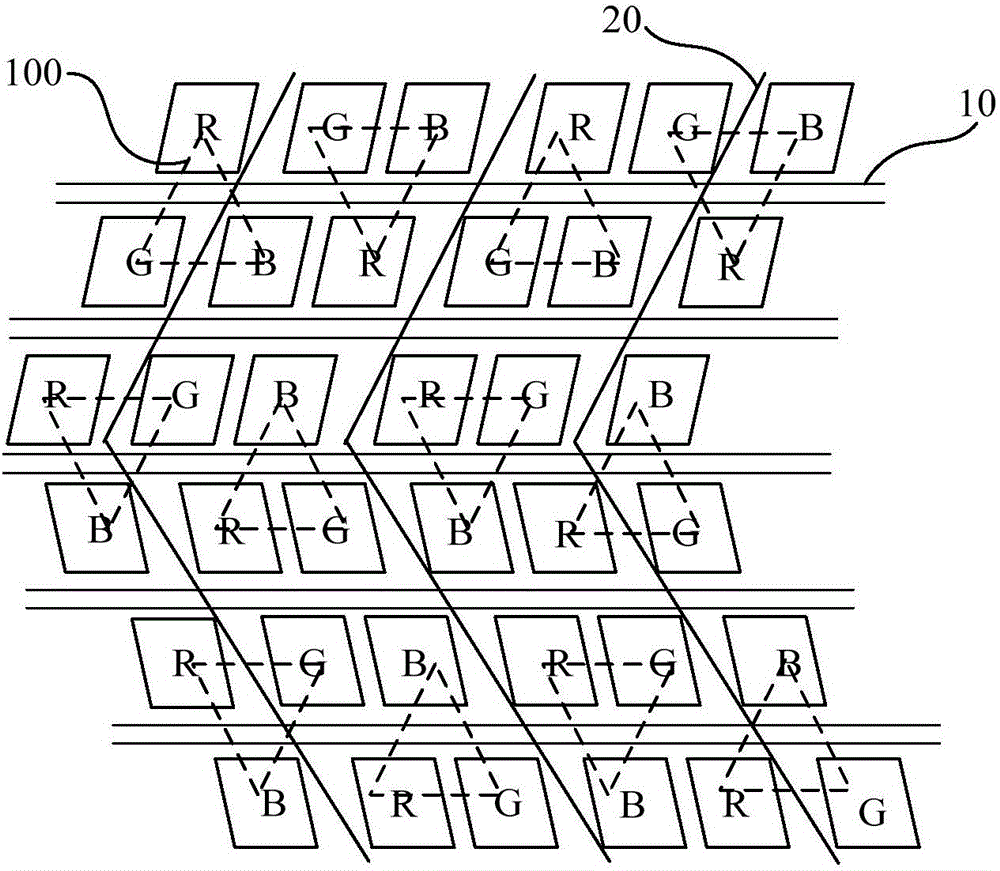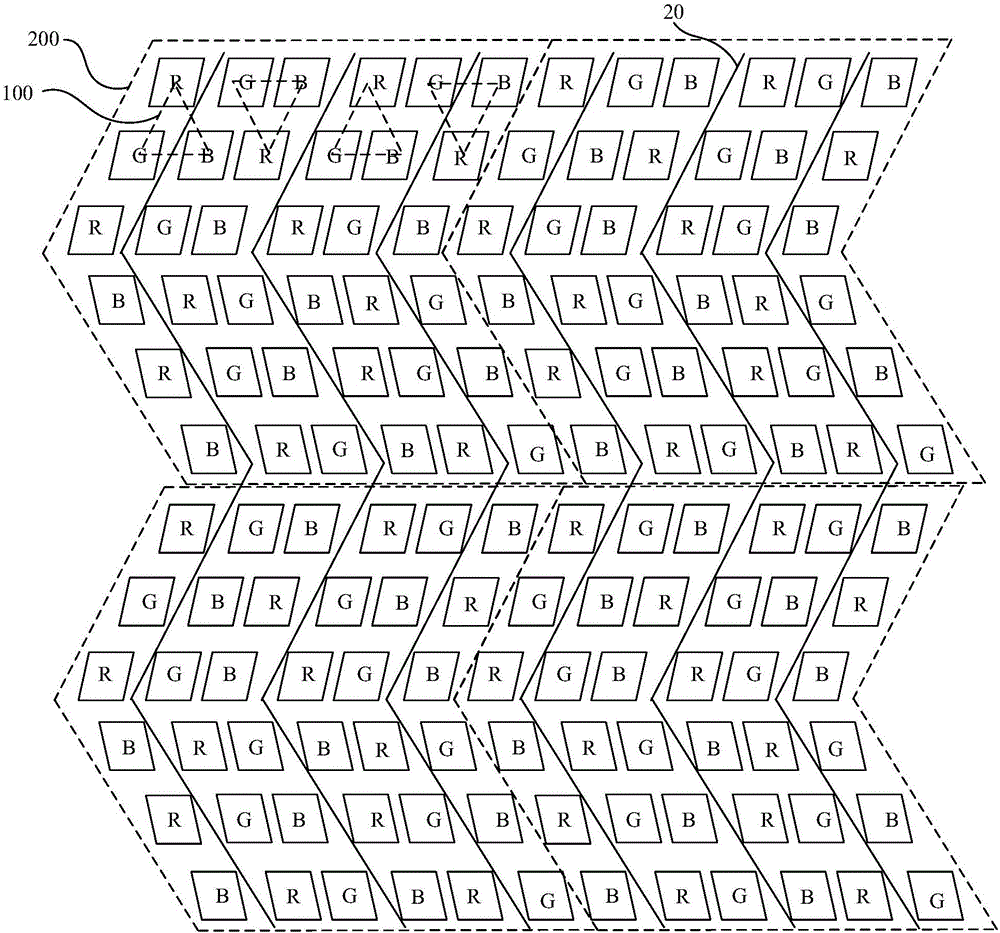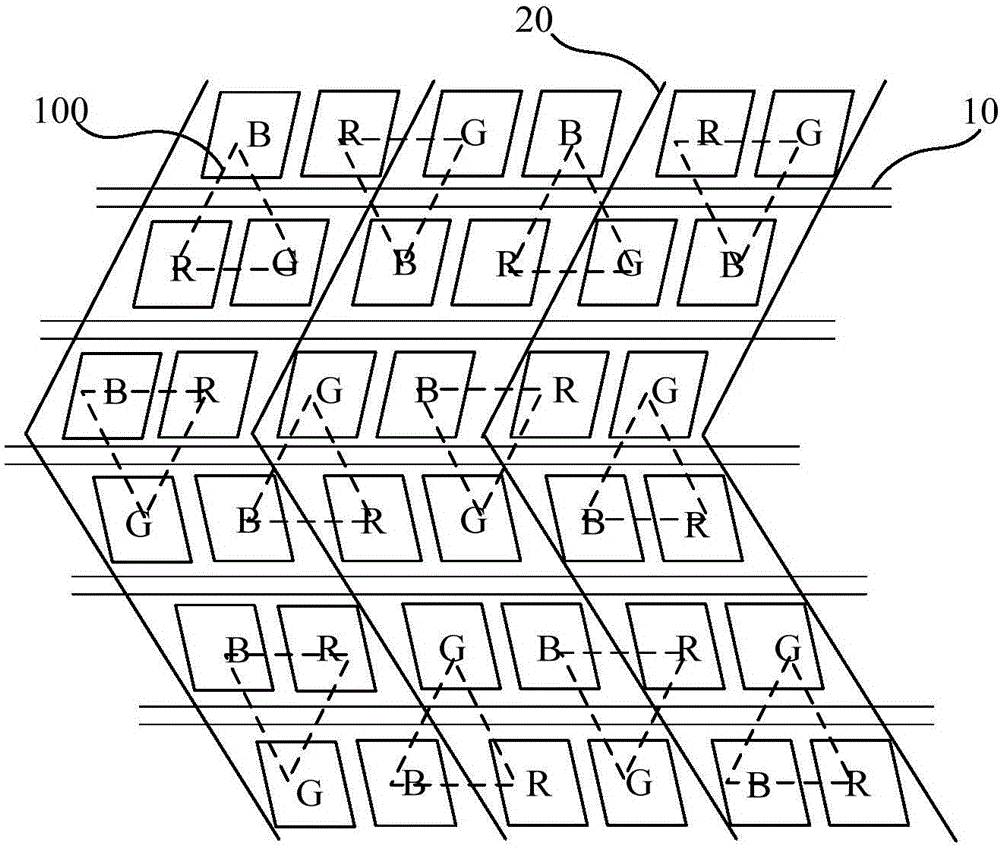Display substrate and display device
A technology for display substrates and display devices, used in static indicators, optics, instruments, etc., can solve the problems of sacrificing sub-pixel area area, pixel light and dark differences, and improving aperture ratio, so as to solve the difference in aperture ratio and pixel brightness distribution. , the brightness distribution is consistent, and the effect of reducing the brightness difference
- Summary
- Abstract
- Description
- Claims
- Application Information
AI Technical Summary
Problems solved by technology
Method used
Image
Examples
Embodiment Construction
[0016] The present invention provides a display substrate, specifically a display substrate with a double-gate structure, which is used to solve the problem that the double-gate structure saves half of the data lines, resulting in differences in brightness between pixel regions and affecting display quality.
[0017] In order to solve the above technical problems, the present invention sets the display substrate to include a plurality of pixel repeating units, the number of pixel regions in all pixel repeating units is the same, and the sub-pixel regions are arranged in the same way, and each pixel region is composed of two adjacent The row consists of three adjacent sub-pixel regions. Each pixel repeating unit includes 2n rows*3m columns of sub-pixel areas. Since the pixel repeating unit includes an integer number of columns of sub-pixel areas, it overcomes the impact of saving half of the data lines on the brightness of the pixel repeating unit, ensuring that the brightness d...
PUM
 Login to View More
Login to View More Abstract
Description
Claims
Application Information
 Login to View More
Login to View More - Generate Ideas
- Intellectual Property
- Life Sciences
- Materials
- Tech Scout
- Unparalleled Data Quality
- Higher Quality Content
- 60% Fewer Hallucinations
Browse by: Latest US Patents, China's latest patents, Technical Efficacy Thesaurus, Application Domain, Technology Topic, Popular Technical Reports.
© 2025 PatSnap. All rights reserved.Legal|Privacy policy|Modern Slavery Act Transparency Statement|Sitemap|About US| Contact US: help@patsnap.com



